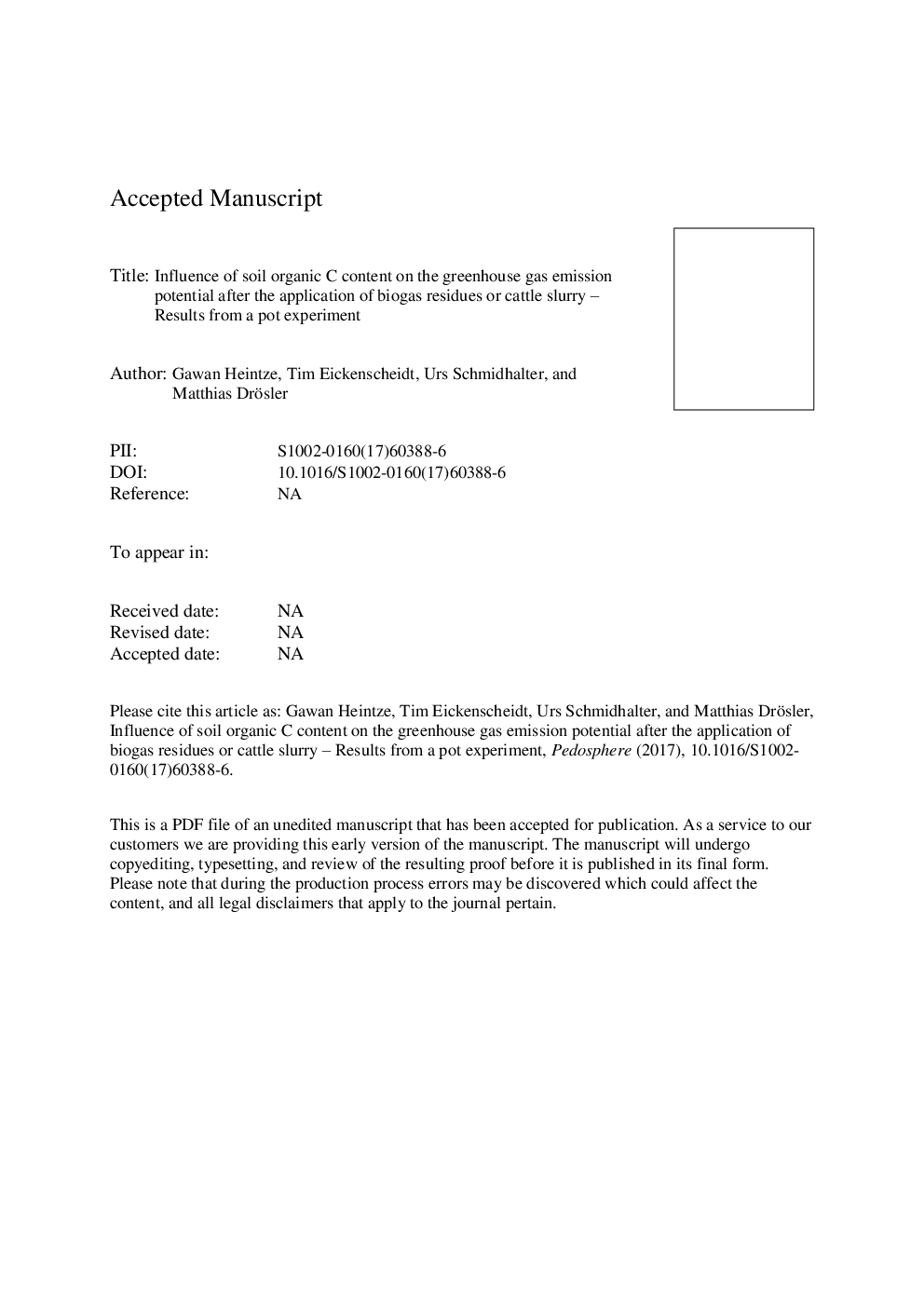| Article ID | Journal | Published Year | Pages | File Type |
|---|---|---|---|---|
| 8895432 | Pedosphere | 2017 | 27 Pages |
Abstract
A change in the European Union energy policy has markedly promoted the expansion of biogas production. Consequently, large amounts of nutrient-rich residues are being used as organic fertilizers. In this study, a pot experiment was conducted to simulate the high-risk situation of enhanced greenhouse gas (GHG) emissions following organic fertilizer application in energy maize cultivation. We hypothesized that cattle slurry application enhanced CO2 and N2O fluxes compared to biogas digestate because of the overall higher carbon (C) and nitrogen (N) input, and that higher levels of CO2 and N2O emissions could be expected by increasing soil organic C (SOC) and N contents. Biogas digestate and cattle slurry, at a rate of 150 kg
NH4+-N haâ1, were incorporated into 3 soil types with low, medium, and high SOC contents (Cambisol, Mollic Gleysol, and Sapric Histosol, termed Clow, Cmedium, and Chigh, respectively). The GHG exchange (CO2, CH4, and N2O) was measured on 5 replicates over a period of 22 d using the closed chamber technique. The application of cattle slurry resulted in significantly higher CO2 and N2O fluxes compared to the application of biogas digestate. No differences were observed in CH4 exchange, which was close to zero for all treatments. Significantly higher CO2 emissions were observed in Chigh compared to the other two soil types, whereas the highest N2O emissions were observed in Cmedium. Thus, the results demonstrate the importance of soil type-adapted fertilization with respect to changing soil physical and environmental conditions.
Related Topics
Life Sciences
Agricultural and Biological Sciences
Soil Science
Authors
Gawan HEINTZE, Tim EICKENSCHEIDT, Urs SCHMIDHALTER, Matthias DRÃSLER,
